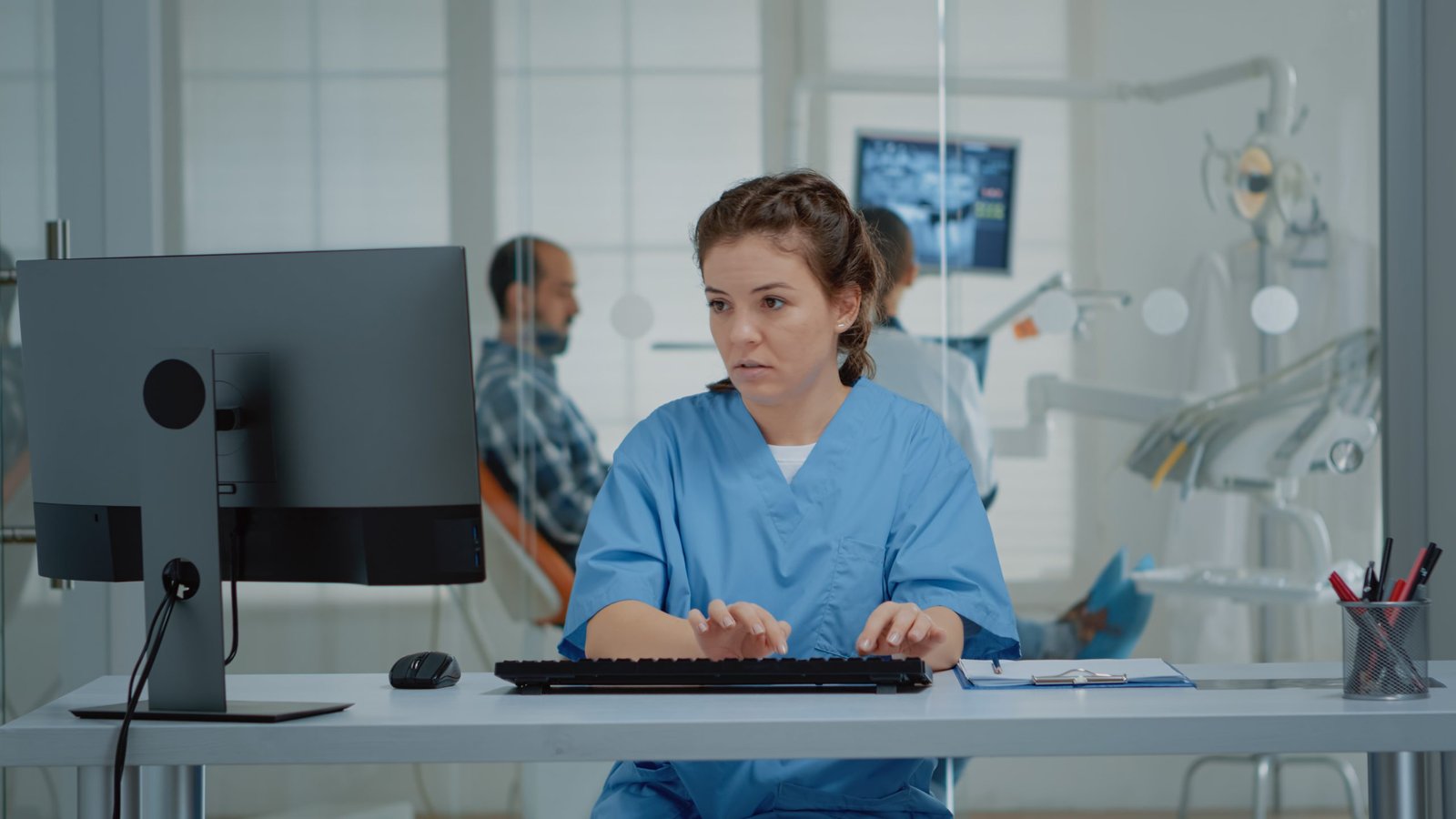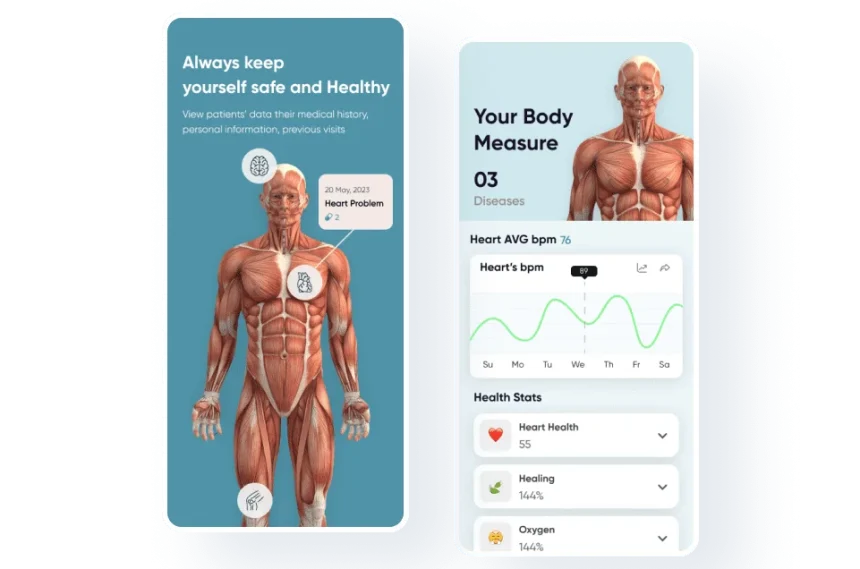Healthcare professionals are required to stay current with evolving treatments, technologies, and regulations to ensure high-quality patient care. Conventional training methods often fall short due to logistical limitations, inconsistent delivery, and rising operational demands. This article examines how eLearning is transforming professional development in both large institutions and private practices by providing flexible, scalable, and data-driven educational solutions.
In a sector where errors can result in significant harm or liability, the speed of digital learning updates becomes a matter of safety, not convenience.
Daniel Madi, MD

The New Foundation of Knowledge in Healthcare
The integration of eLearning into the healthcare industry marks a significant evolution in the way medical knowledge is disseminated, professional standards are upheld, and patient care is ultimately improved. As one of the most knowledge-intensive and rapidly evolving fields, healthcare demands constant access to updated protocols, novel treatments, regulatory changes, and interdisciplinary collaboration. Traditional training and educational models are increasingly inadequate in addressing these needs due to logistical limitations, inflexible scheduling, and a lack of personalization. In contrast, eLearning platforms provide a dynamic, scalable, and data-driven alternative that is quickly becoming indispensable to modern healthcare organizations.
A Response to the Demands of Specialization and Precision
The complexity of healthcare systems requires a high degree of specialization and continual professional development. Physicians, nurses, administrative staff, and support personnel must regularly update their competencies to comply with new standards and ensure optimal patient outcomes. eLearning facilitates this continuous education by allowing institutions to deploy high-quality training modules across geographically dispersed teams without the need for physical presence. Whether through asynchronous video lectures, interactive simulations, real-time quizzes, or virtual case studies, eLearning enables practitioners to learn at their own pace while still being assessed and guided in a structured environment. These tools also allow for the real-time tracking of performance metrics, providing organizations with actionable insights into workforce readiness and knowledge gaps. In medical contexts where precision is critical and error margins are narrow, the ability to deliver standardized training across all levels of staff is essential. eLearning ensures uniformity in the content delivered, eliminating instructor-based variability and reducing the risk of misinformation. Moreover, it empowers healthcare organizations to respond swiftly to emergent challenges such as public health crises, updated clinical guidelines, or legal changes in compliance standards.
Cognitive Reinforcement and the Shift Toward Intelligent Learning Models
Beyond logistical advantages, eLearning fosters a culture of accountability and curiosity. It accommodates diverse learning styles and provides instant feedback loops that encourage retention and participation. Unlike passive classroom lectures, interactive modules allow learners to apply theoretical knowledge in simulated environments, improving both retention and diagnostic reasoning. This kind of engagement is especially valuable in high-stakes environments such as emergency rooms and surgical theaters, where sharper thinking can directly impact patient survival. As the demand for competent healthcare delivery increases, so does the necessity for scalable and efficient training systems. eLearning is not a luxury or a futuristic supplement—it is becoming the infrastructure through which the modern healthcare workforce is formed.

Scalability and Cost-Efficiency in an Industry Under Pressure
Healthcare organizations operate under constant financial and operational pressures. Staffing shortages, regulatory compliance costs, and the growing demand for services all place a premium on efficient resource management. eLearning addresses these pressures by dramatically reducing the costs associated with traditional, in-person training programs. There is no need to rent physical classrooms, coordinate large groups, or fly in instructors. Once developed, a high-quality course can be deployed to thousands of staff members simultaneously and updated as needed without logistical complications. Furthermore, eLearning reduces indirect costs such as productivity loss from travel and downtime. The asynchronous nature of online training means that staff can complete their education without interrupting their shifts, allowing for seamless integration into work schedules.
The scalability of eLearning is especially important for large hospital networks, pharmaceutical corporations, and national health initiatives. These organizations often require synchronized training across many locations and departments. eLearning platforms support this by providing centralized control over training content, compliance reporting, and certification management. Course completion data, quiz scores, and learner progress can be monitored and analyzed to ensure that knowledge transfer is taking place effectively. These insights can also be used to identify knowledge gaps and create targeted interventions, enhancing the precision and relevance of training programs.
Improved Compliance and Risk Management Through Digital Monitoring
In the healthcare sector, compliance is not merely a bureaucratic obligation, it is a legal and ethical imperative tied directly to patient safety and organizational reputation. eLearning systems allow organizations to design mandatory training programs around subjects such as data protection, HIPAA regulations, workplace safety, infection control, and anti-harassment protocols. These modules can be automatically assigned to relevant roles, tracked for completion, and stored as digital records in case of audits or litigation. The presence of a robust eLearning system can therefore act as a risk mitigation tool, protecting institutions from regulatory breaches and reputational damage.
Moreover, eLearning platforms can adapt to evolving regulatory environments faster than printed manuals or traditional seminar-based training. Updates to protocols or legislation can be incorporated into existing modules and redistributed at scale in a matter of hours. This adaptability ensures that healthcare workers are never operating based on outdated or inaccurate information. In a sector where errors can result in significant harm or liability, this speed of response is critical.
A Shift Toward Global Standards and Interoperability
As healthcare becomes increasingly globalized, institutions must align with international standards and practices. eLearning platforms support this alignment by making it possible to distribute training content in multiple languages, adapted to regional contexts, while maintaining the core integrity of the information. Accreditation and certification programs offered through eLearning can also help standardize professional credentials, facilitating the mobility of skilled workers across borders and health systems. For organizations involved in international public health, humanitarian efforts, or cross-border clinical trials, the ability to coordinate education through a unified digital platform is essential.
eLearning is not simply a response to digital trends, it is a response to the deep structural needs of a healthcare system in transformation. The shift toward smart, adaptive learning is not only inevitable but already underway, and those organizations that invest in scalable, evidence-based eLearning platforms are positioning themselves not just for operational success, but for long-term resilience and leadership in the industry.
Democratizing Access to Knowledge for Clinics and Individual Practitioners
While large hospitals and health systems benefit from the scalability of enterprise-level eLearning platforms, the value of digital training is equally transformative for smaller healthcare providers. Independent clinics, private practices, dental offices, and specialized therapy centers often operate with limited staffing, tighter budgets, and more demanding schedules. These environments leave little room for downtime or traditional continuing education. For these professionals, eLearning offers access to high-quality medical education that would otherwise require significant time away from patient care or costly in-person courses.
By adopting flexible and modular eLearning tools, individual practitioners can maintain compliance with medical licensing boards, stay informed about the latest clinical guidelines, and participate in ongoing specialization without disrupting their workflow. Whether it is a general practitioner completing required CME credits, a chiropractor reviewing updated imaging techniques, or a dermatologist learning about newly approved treatments, eLearning allows for self-paced learning that fits within irregular working hours and variable patient loads. Some platforms also integrate voice narration, downloadable resources, and adaptive assessments—making the experience more accessible for those who prefer hands-on or auditory learning formats.
Building Professional Autonomy and Strengthening Patient Trust
For independent professionals, knowledge is not only a tool for clinical decision-making but a signal of credibility and commitment. Patients increasingly seek care from providers who stay current with scientific advances and who adopt innovative approaches to diagnostics and treatment. eLearning enables doctors and nurses to demonstrate continuous development by completing certifications, publishing their credentials, and engaging with case-based learning that sharpens both critical thinking and bedside manner. This intellectual autonomy strengthens the practitioner’s role not only as a technician but as a trusted guide in the healing process.
Small clinics can also use eLearning to train administrative staff in billing practices, insurance compliance, data privacy, and customer service. These areas, though often overlooked, play a crucial role in the patient experience and financial health of a private practice. With eLearning, the entire team can grow in parallel, aligned to the same values, protocols, and quality benchmarks.
Reducing Isolation Through Connected Learning Communities
Practicing privately can sometimes lead to professional isolation. eLearning platforms that offer collaborative features—forums, webinars, peer feedback, and expert Q&A—allow individual practitioners to remain part of a broader professional ecosystem. This interconnection can spark interdisciplinary collaboration, expose learners to diverse case studies, and offer emotional reinforcement through shared experience and support. Access to global networks and expert-led content, once reserved for those affiliated with major universities or teaching hospitals, is now possible through even modest digital subscriptions.
The growing accessibility of eLearning is leveling the field in healthcare education. Whether in a metropolitan hospital or a rural clinic, a digitally enabled practitioner can now benefit from the same evidence-based knowledge, the same training pathways, and the same professional growth opportunities. In this way, eLearning does more than train. It empowers, connects, and sustains a profession tasked with healing in a complex and demanding world.





